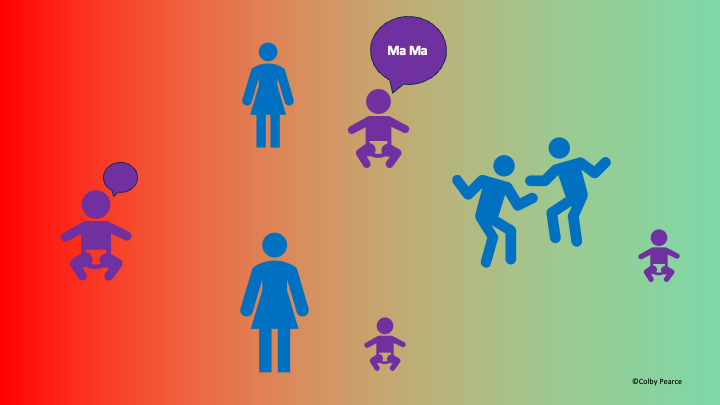
If we then turn our minds to children and young people who are recovering from a tough start to life, what then for their language development and use? When parents struggle significantly in the caregiving role due to their own mental health difficulties, substance abuse issues, relationship difficulties, and/or inadequate parenting knowledge, it is clear to see that the language expression of children and young people who come from that environment is likely to be limited. Put simply, due to inadequate acknowledgement of, and responsiveness to, their attempts to communicate with words, these infants grow with both a reduced vocabulary to express their experiences and needs through words, and less motivation to use them. Rather, they rely overmuch on gestures to communicate, and their behaviour can often be seen to mimic those first behavioural strategies to secure a caregiving response, namely the cry and the social smile. They can be described as overly emotionally demonstrative, though with a restricted range of affect, overly charming, or alternate between the two. These behavioural strategies serve to regulate caregiver engagement and responsiveness. They often communicate that the child or young person has a need that they are preoccupied with, or that they are feeling unsafe. Unfortunately, for the older child they are rarely seen as such by adult caretakers, leaving them feeling chronically misunderstood. This compounds a range of problems experienced by children and young people recovering from a tough start to life, and adults who interact with them in a caregiving role.
Children and young people who are recovering from a tough start to life benefit from the caregiving adults in their life seeing their behaviour as having communicative intent and reflecting their experience and needs. As occurs in conventional nurturing care environments, they need adult caretakers to communicate understanding of their experience and needs through their own words and actions.
Click here to enter the next page of this module.
To go back, click here.
To access the handbook for this self-paced learning module, click here.
